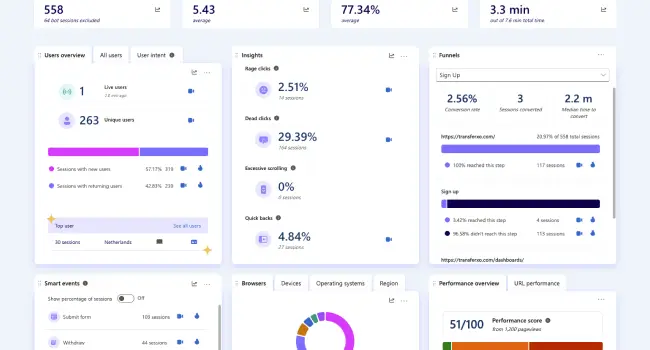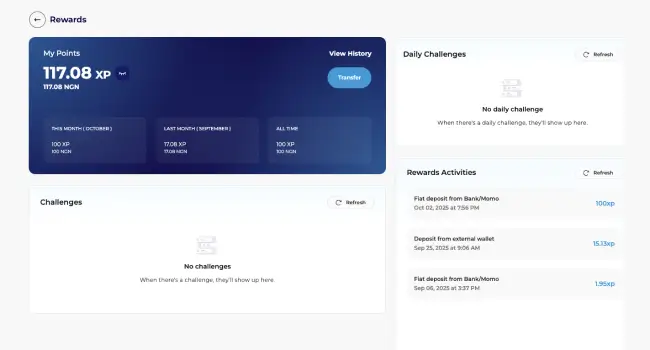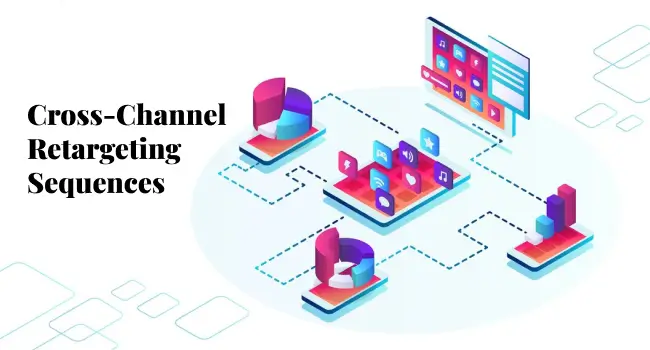Growth marketing experiments are the backbone of successful digital businesses in 2025. Unlike traditional marketing approaches, these data-driven strategies allow you to test, measure, and scale what works while quickly pivoting from what doesn't. With AI transforming the marketing landscape and consumer behaviour evolving rapidly, running strategic growth marketing experiments this month can significantly impact your business's trajectory and revenue growth.
Why Growth Marketing Experiments Matter in 2026
The marketing landscape has fundamentally shifted. Traditional one-size-fits-all approaches are becoming obsolete as consumers demand personalised, authentic experiences. Growth marketing experiments allow businesses to adapt quickly, test hypotheses with real data, and discover breakthrough strategies that competitors haven't yet identified.
Current market research shows that companies implementing systematic growth marketing experiments see 3.5x higher customer acquisition rates and 2.8x better retention compared to those using static marketing strategies. The key lies in treating marketing as a laboratory where every campaign becomes a learning opportunity.

The Science Behind Effective Growth Marketing Experiments
Successful growth marketing experiments follow a structured methodology that ensures reliable results and actionable insights. The foundation rests on four pillars: hypothesis formation, controlled testing, data analysis, and iterative improvement.
Hypothesis-Driven Approach
Every growth marketing experiment must start with a clear hypothesis. This isn't just a guess; it's an educated prediction based on user behaviour data, market research, and business objectives. A strong hypothesis follows the format: "If we implement [specific change], then [target audience] will [desired behaviour] because [underlying reasoning]."
Statistical Significance and Sample Sizes
One critical mistake many businesses make is ending experiments too early or with insufficient data. For reliable results, your growth marketing experiments need adequate sample sizes and proper statistical analysis. Generally, you need at least 1,000 conversions per variation to reach statistical significance, though this varies based on your conversion rates and traffic volume.
10 Proven Growth Marketing Experiments You Can Launch This Year
1. AI-Powered Personalisation at Scale
Artificial intelligence has revolutionised personalisation capabilities in 2025. This growth marketing experiment involves implementing AI-driven content personalisation across your website, email campaigns, and social media.
Implementation: Use machine learning algorithms to analyse user behaviour patterns, purchase history, and engagement data. Create dynamic content that adapts in real-time based on individual user preferences. Tools like Dynamic Yield, Optimizely, or even custom AI solutions can power this experiment.
Success Metrics: Track conversion rate improvements, time on site, click-through rates, and customer lifetime value. Companies typically see 15-25% increases in conversion rates within the first month.
Timeline: 2-3 weeks for implementation, 4-6 weeks for data collection.

2. Micro-Influencer Partnership Campaigns
Micro-influencers (1K-100K followers) often deliver higher engagement rates and more authentic connections than mega-influencers. This growth marketing experiment focuses on building strategic partnerships with niche micro-influencers in your industry.
Strategy: Identify 10-15 micro-influencers whose audiences align with your target demographics. Create collaborative content that feels authentic rather than promotional. Focus on storytelling and genuine product experiences.
Execution: Reach out with personalised collaboration proposals, provide clear brand guidelines while allowing creative freedom, and establish clear performance metrics upfront.
Expected Results: Micro-influencer campaigns typically generate 3-5x higher engagement rates than traditional paid advertising, with cost-per-acquisition often 40-60% lower.

3. Interactive Content Gamification
Gamification elements in marketing campaigns can significantly boost engagement and conversion rates. This growth marketing experiment involves adding game-like elements to your customer journey.
Implementation Ideas:
- Progress bars for onboarding processes
- Point systems for engagement activities
- Achievement badges for milestones
- Interactive quizzes with personalised results
- Scratch-off discounts and surprise rewards
Measurement: Track engagement metrics, completion rates, social sharing, and conversion improvements. Well-executed gamification can increase user engagement by 30-50%.

4. Voice Search optimisation Testing
With voice search accounting for over 35% of all searches in 2025, optimizing for voice queries represents a significant growth opportunity. This experiment focuses on creating voice-search-friendly content and measuring its impact.
Action Steps:
- Research long-tail voice search keywords in your niche
- Create conversational FAQ content
- Optimise for featured snippets
- Implement local SEO for voice searches
- Test different content formats for voice compatibility
Success Indicators: Monitor rankings for voice search queries, featured snippet captures, and organic traffic from voice-optimised content.
5. Community-Driven Marketing Initiatives
Building authentic communities around your brand creates sustainable growth engines. This growth marketing experiment involves launching or enhancing community platforms where customers become brand advocates.
Platform Options: Facebook Groups, Discord servers, LinkedIn communities, or custom community platforms like Circle or Mighty Networks.
Community Strategy:
- Provide exclusive value and insider access
- Facilitate peer-to-peer connections
- Host regular events and discussions
- Share behind-the-scenes content
- Encourage user-generated content
ROI Measurement: Track community growth, engagement levels, referral traffic, and conversion rates from community members versus non-members.

6. Cross-Channel Retargeting Sequences
Modern consumers interact with brands across multiple touchpoints. This growth marketing experiment creates sophisticated retargeting sequences that follow users across different platforms and devices.
Multi-Channel Approach:
- Web browser retargeting
- Social media platform retargeting
- Email remarketing sequences
- SMS follow-up campaigns
- Connected TV advertising
Advanced Tactics: Implement dynamic creative optimisation, frequency capping, and sequential messaging that tells a cohesive story across channels.
Performance Tracking: Monitor cross-channel attribution, customer journey mapping, and incremental lift from coordinated campaigns.

7. User-Generated Content Amplification
Authentic content created by your customers often outperforms branded content in terms of trust and engagement. This experiment focuses on systematically encouraging, collecting, and amplifying user-generated content.
UGC Strategies:
- Hashtag campaigns with incentives
- Photo contests and challenges
- Customer story features
- Review and testimonial spotlights
- Social media takeovers
Amplification Methods: Share UGC across all marketing channels, incorporate into paid advertising, feature on your website, and use in email campaigns.
Impact Measurement: Track content engagement rates, social proof effectiveness, and conversion improvements from UGC versus branded content.
8. Conversion Rate optimisation Through behavioural Psychology
This growth marketing experiment applies psychological principles to improve conversion rates throughout your funnel. Focus on cognitive biases and behavioural triggers that influence decision-making.
Psychology Principles to Test:
- Social proof and consensus
- Scarcity and urgency
- Authority and credibility
- Reciprocity and value exchange
- Loss aversion and FOMO
Implementation Areas:
- Landing page design and copy
- Checkout process optimisation
- Email subject lines and content
- Product descriptions and presentations
- Call-to-action buttons and placement
Testing Framework: Run A/B tests for each psychological principle, measure statistical significance, and implement winners across similar touchpoints.
9. Predictive Analytics for Customer Lifetime Value
Use machine learning to predict customer lifetime value and optimise marketing spend accordingly. This advanced growth marketing experiment helps identify high-value prospects and customise acquisition strategies.
Data Requirements:
- Historical customer data
- behavioural tracking information
- Transaction history
- Engagement metrics
- Demographic information
Implementation Steps:
- Build or integrate predictive models
- Segment customers by predicted LTV
- Create targeted campaigns for each segment
- Adjust bidding strategies in paid advertising
- Personalise retention campaigns
ROI Impact: Companies using predictive LTV modeling typically see 20-30% improvements in marketing efficiency and customer acquisition cost reduction.
10. Progressive Web App (PWA) Conversion Testing
Progressive Web Apps offer app-like experiences through web browsers, potentially increasing engagement and conversion rates. This growth marketing experiment tests PWA implementation impact on user behaviour and business metrics.
PWA Features to Test:
- Push notifications
- Offline functionality
- Fast loading speeds
- Home screen installation
- Native app-like navigation
Performance Metrics: Compare user engagement, conversion rates, session duration, and retention between PWA and traditional web experiences.
Expected Benefits: PWAs typically show 2-4x improvements in loading speed and 50-70% increases in user engagement compared to standard websites.

Implementation Framework and Timeline
Successfully running growth marketing experiments requires structured planning and execution. Follow this proven framework to maximise your chances of meaningful results.
Week 1: Planning and Setup
- Define clear hypotheses and success metrics
- Set up tracking and analytics infrastructure
- Allocate resources and assign responsibilities
- Create detailed testing protocols
Week 2-3: Launch and Monitor
- Execute experiments according to your predetermined plan
- Monitor key metrics daily without making premature optimisations
- Document observations and unexpected results
- Ensure proper data collection and quality
Week 4-6: Analysis and optimisation
- analyse results for statistical significance
- Identify winning variations and successful strategies
- Scale successful experiments across larger audiences
- Plan follow-up tests based on insights gained
Measuring Success and ROI
Effective measurement goes beyond surface-level metrics. Your growth marketing experiments should track both leading indicators and lagging business outcomes.
Primary KPIs to Monitor:
- Customer Acquisition Cost (CAC)
- Customer Lifetime Value (CLV)
- Conversion rates across funnel stages
- Return on ad spend (ROAS)
- Organic growth metrics
Secondary Metrics:
- Engagement rates and time spent
- Social sharing and virality coefficients
- Brand awareness and sentiment scores
- Customer satisfaction and Net Promoter Score
- Market share and competitive positioning
Advanced Analytics:
- Attribution modeling across touchpoints
- Incremental lift measurements
- Statistical significance testing
- Cohort analysis for long-term impact
- Predictive modeling for future performance
Common Pitfalls Growth Marketing Experiments to Avoid
Learning from common mistakes can save significant time and resources in your growth marketing experiments.
Statistical Errors
Ending tests too early, running multiple tests simultaneously without proper controls, and misinterpreting correlation as causation are frequent issues that compromise experiment validity.
Resource Allocation Mistakes
Spreading resources too thin across many small experiments instead of focusing on high-impact opportunities often leads to inconclusive results and wasted effort.
Implementation Gaps
Poor tracking setup, inadequate sample sizes, and failure to maintain consistent test conditions can invalidate your experimental results and lead to wrong conclusions.
Advanced Growth Marketing Optimisation Strategies
Once you've mastered basic growth marketing experiments, consider these advanced techniques to unlock additional growth opportunities.
Multi-Variate Testing
Test multiple elements simultaneously to understand interaction effects and optimise entire experiences rather than individual components.
Sequential Testing
Build experiments that layer upon each other, using insights from previous tests to inform more sophisticated follow-up experiments.
Machine Learning Integration
Implement automated optimisation algorithms that continuously adjust campaigns based on performance data and changing market conditions.

Essential Tools and Resources
Analytics and Testing Platforms:
- Google Analytics 4 with enhanced ecommerce tracking
- Optimizely or VWO for A/B testing
- Hotjar or Clarity for user behaviour analysis
- Mixpanel or Amplitude for event tracking and funnel analysis
Marketing Automation:
- HubSpot or Zoho CRM Plus for comprehensive inbound marketing
- Klaviyo, Customer.io, Brevo or Mailchimp for email marketing automation
- Zapier for workflow automation
- Segment for customer data platform management
AI and Personalisation:
- Dynamic Yield for personalisation at scale
- Personyze for AI-driven content optimisation
- Optimove for predictive customer modeling
- Adobe Target for enterprise-level testing
Community and Social Tools:
- Circle, Mighty Networks, WhatsApp, Telegram or Discord for community building
- Buffer or Hootsuite for social media management
- BuzzSumo for content research and influencer identification
- Canva or Figma for creative asset creation
Conclusion and Your Next Steps
Growth marketing experiments represent the future of successful digital marketing. By implementing these 10 proven strategies this month, you're positioning your business to discover breakthrough growth opportunities while your competitors stick to outdated traditional approaches.
The key to success lies in treating each experiment as a learning opportunity, maintaining statistical rigor in your testing approach, and scaling winning strategies quickly while discarding what doesn't work. Remember that the most valuable insights often come from unexpected results, so stay curious and open to pivoting your strategies based on data.
Start with 2-3 experiments that align most closely with your current business objectives and available resources. Once you establish a testing rhythm and see initial results, gradually expand your experimental portfolio to cover more growth opportunities.
The companies that will dominate their markets in 2025 and beyond are those that embrace systematic experimentation today. Your growth marketing experiments aren't just campaigns, they're investments in discovering the strategies that will drive your business's next phase of explosive growth.
Ready to transform your marketing results? Choose your first growth marketing experiment from this list and begin implementation this week. The data-driven insights you discover will become the foundation for sustainable, scalable business growth that outpaces your competition.


